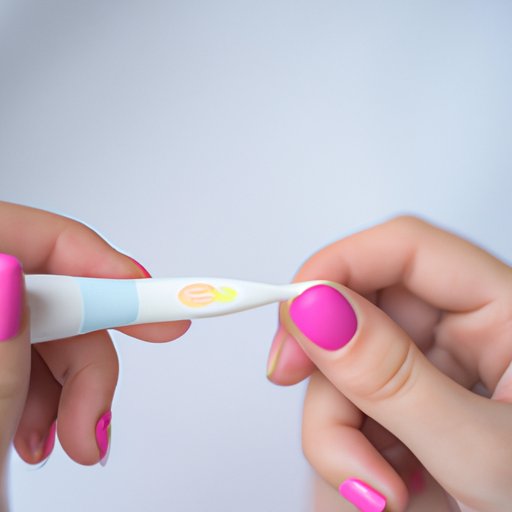Introduction
When trying to conceive, understanding when a woman is most fertile is an important step. Fertility in women is a complex process involving many different factors, including hormonal changes and lifestyle habits. To maximize your chances of conception, it’s important to understand the science behind female fertility and to be able to recognize the signs of ovulation.
Exploring the Science of Fertility in Women
To fully understand when a woman is most fertile, it’s important to first understand the science behind her natural body cycle. During a normal menstrual cycle, a woman’s body will produce hormones that stimulate the release of an egg from one of the ovaries. This egg will then travel down the fallopian tube, where it can potentially be fertilized by sperm. After ovulation, the egg will only survive for 12-24 hours before it disintegrates.
The timing of ovulation varies from woman to woman, but typically occurs around 14 days before the start of a woman’s next period. This is known as the “fertile window,” and this is when a woman is most likely to become pregnant. To determine when the fertile window occurs, it’s important to understand the hormonal changes that occur during this time.
Hormones play a critical role in regulating a woman’s menstrual cycle. During the follicular phase, which occurs at the beginning of the menstrual cycle, estrogen levels rise, stimulating the growth of the endometrium (the lining of the uterus). As the follicular phase progresses, the pituitary gland secretes a hormone known as luteinizing hormone (LH), which triggers the release of an egg from the ovary. This is followed by the luteal phase, during which progesterone levels rise to prepare the uterine lining for implantation of the fertilized egg.
In addition to these hormonal changes, there are other factors that can affect a woman’s fertility. These include age, lifestyle habits, health conditions, and medications. It’s important to be aware of any potential issues that may affect a woman’s ability to conceive and consult with a medical professional if needed.

How to Spot Signs of Ovulation for Optimal Fertility
Spotting the signs of ovulation is key to maximizing your chances of conception. While some women experience no physical symptoms of ovulation, others may notice subtle changes such as breast tenderness, bloating, or light spotting. Many women also experience a surge in their libido during this time.
Another way to identify your fertile window is to take an ovulation test. These tests measure the levels of LH in your urine, which will indicate when you are most likely to ovulate. The results of an ovulation test can help you better plan sex around your most fertile days.

Tips for Maximizing Chances of Conception During Peak Fertility Periods
Once you have identified your fertile window, there are several steps you can take to maximize your chances of conception. Eating healthy foods, staying physically active, and consulting with a medical professional can all help to increase your chances of becoming pregnant.
Eating a balanced diet rich in fruits, vegetables, lean proteins, and whole grains provides your body with the nutrients it needs to support a healthy pregnancy. Additionally, maintaining a healthy weight and avoiding excessive alcohol and caffeine can also improve fertility.
Staying physically active is also important for optimizing fertility. Exercise helps to regulate hormones and increases blood flow to the reproductive organs, both of which can improve fertility. However, it’s important to avoid strenuous exercise and high-intensity workouts, as these can actually reduce fertility.
Finally, consulting with a medical professional can be beneficial for those who are having difficulty conceiving. A doctor can help to identify any underlying health issues or provide advice on fertility treatments that may be beneficial.
Conclusion
Female fertility is a complex process that involves many different factors. Understanding the science behind female fertility and recognizing the signs of ovulation can help to maximize your chances of conception. Eating a healthy diet, staying physically active, and consulting with a medical professional can also be beneficial when trying to conceive. By taking these steps, you can increase your chances of becoming pregnant during your most fertile period.


